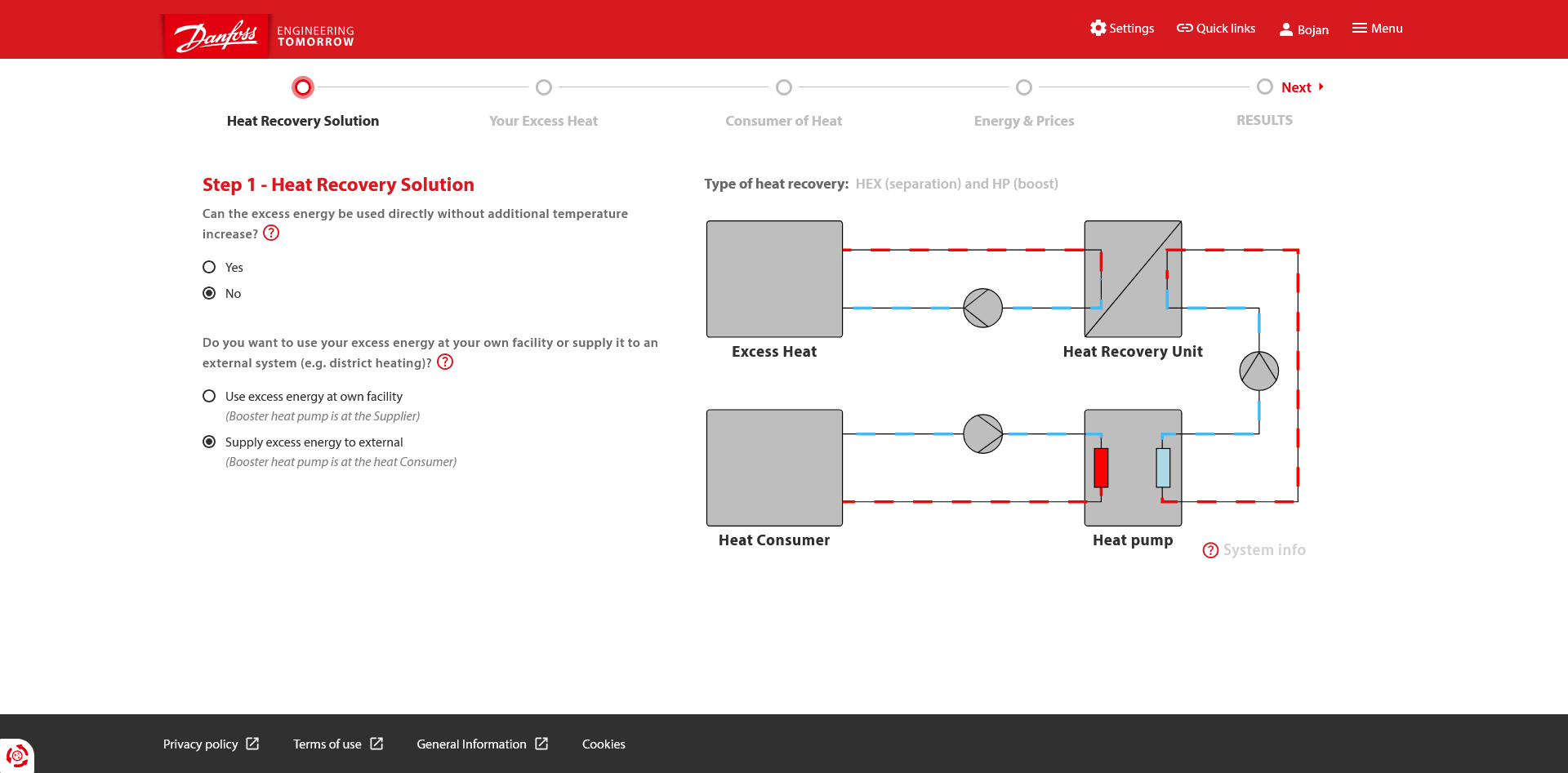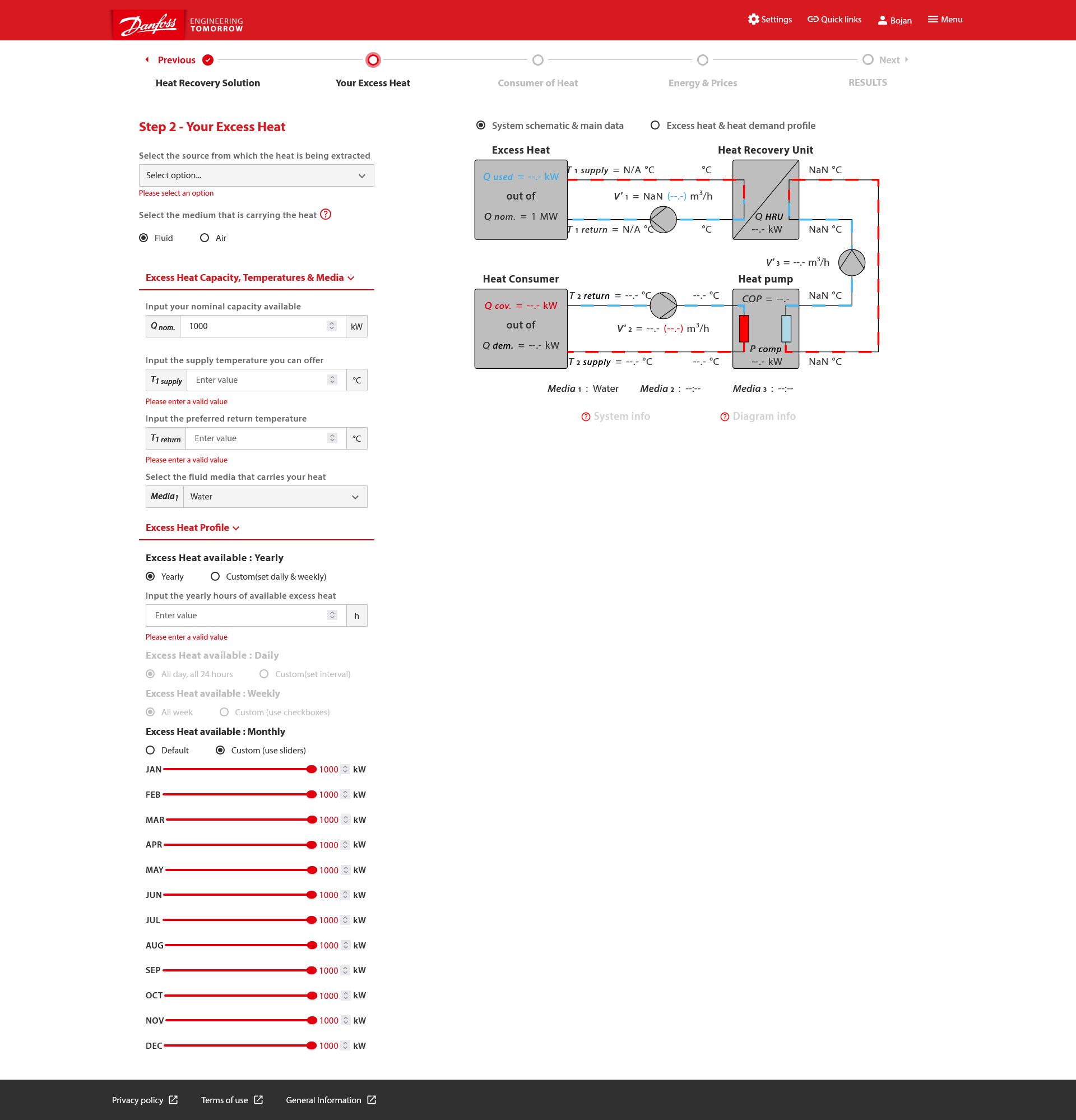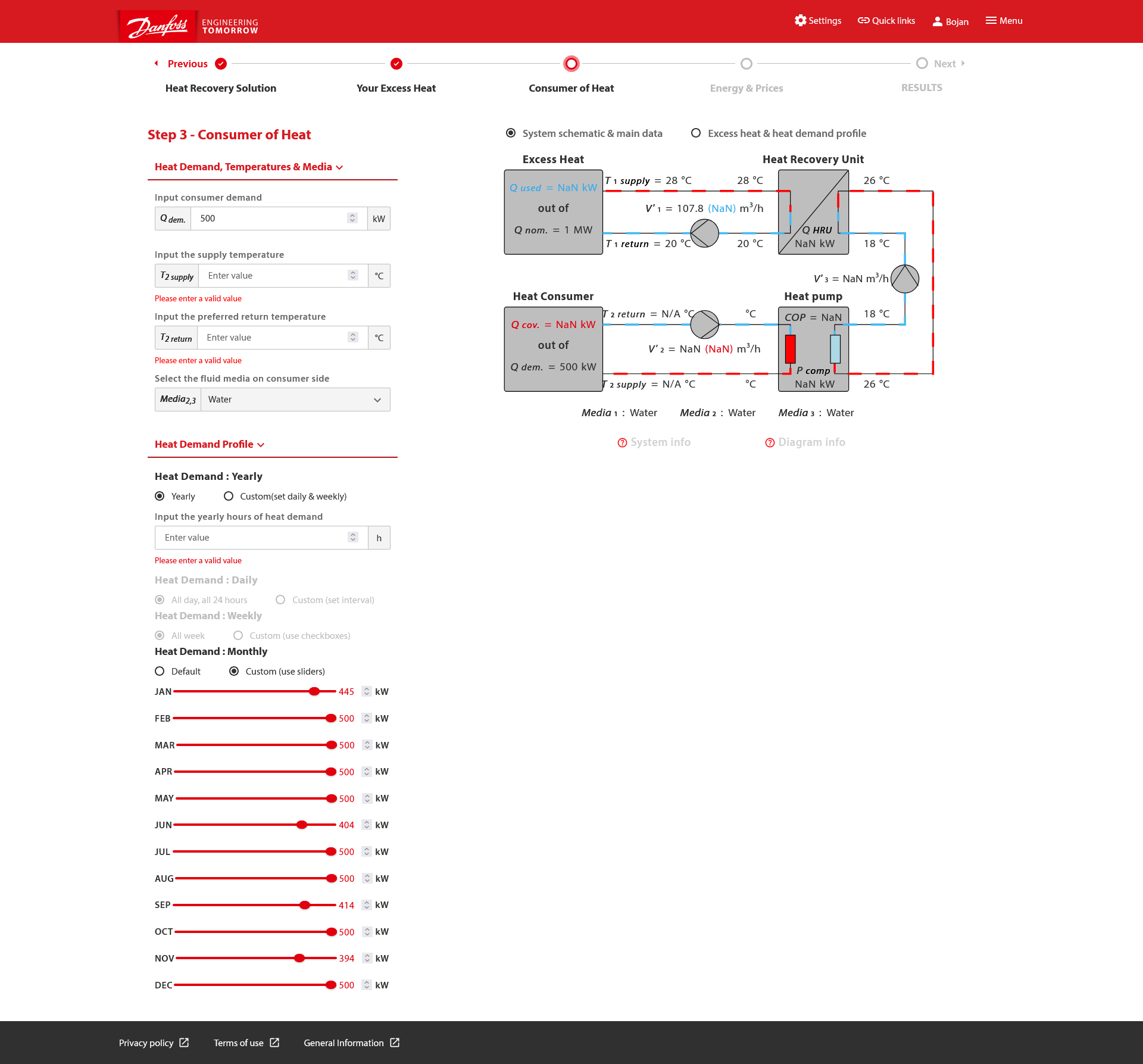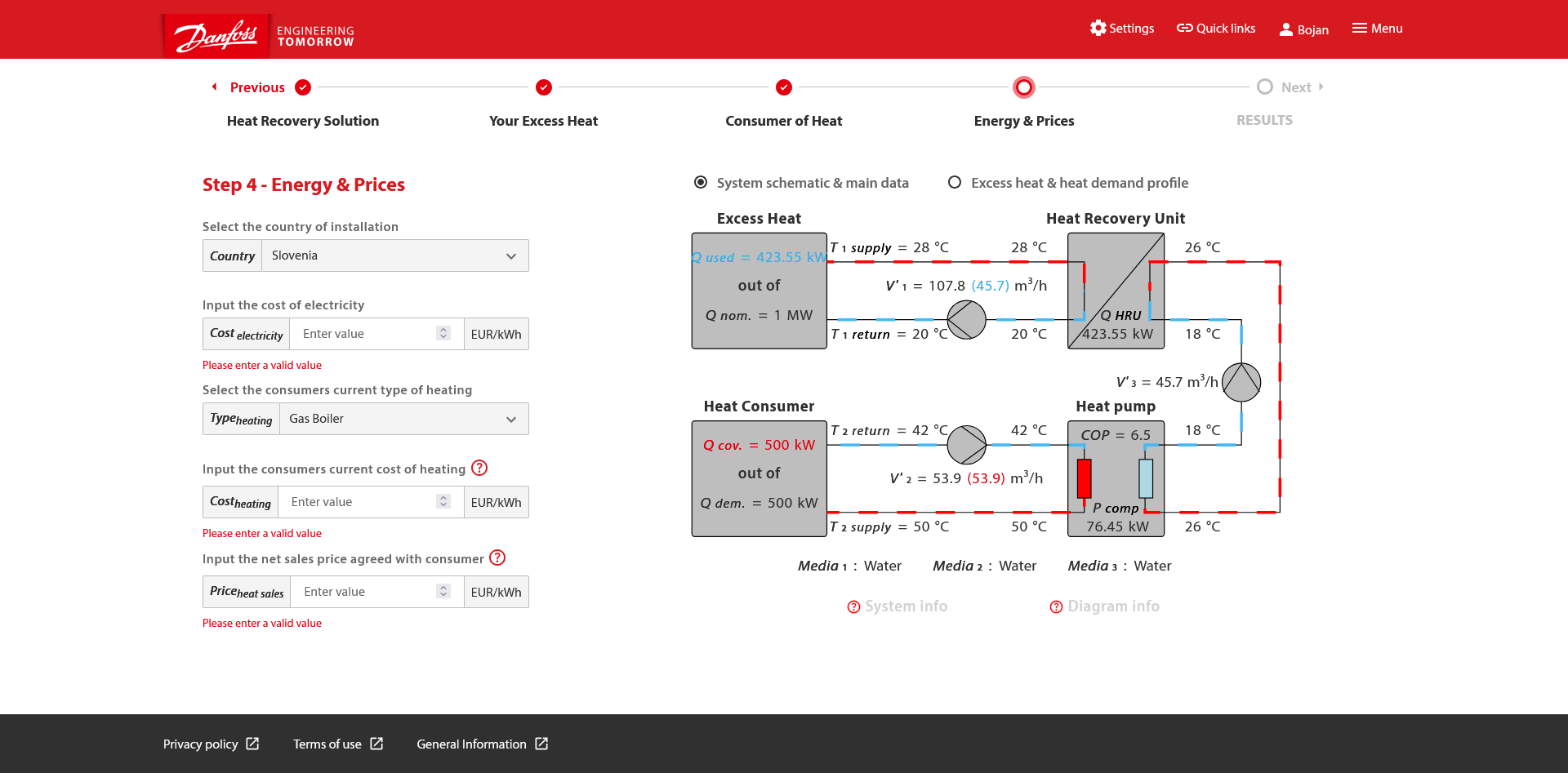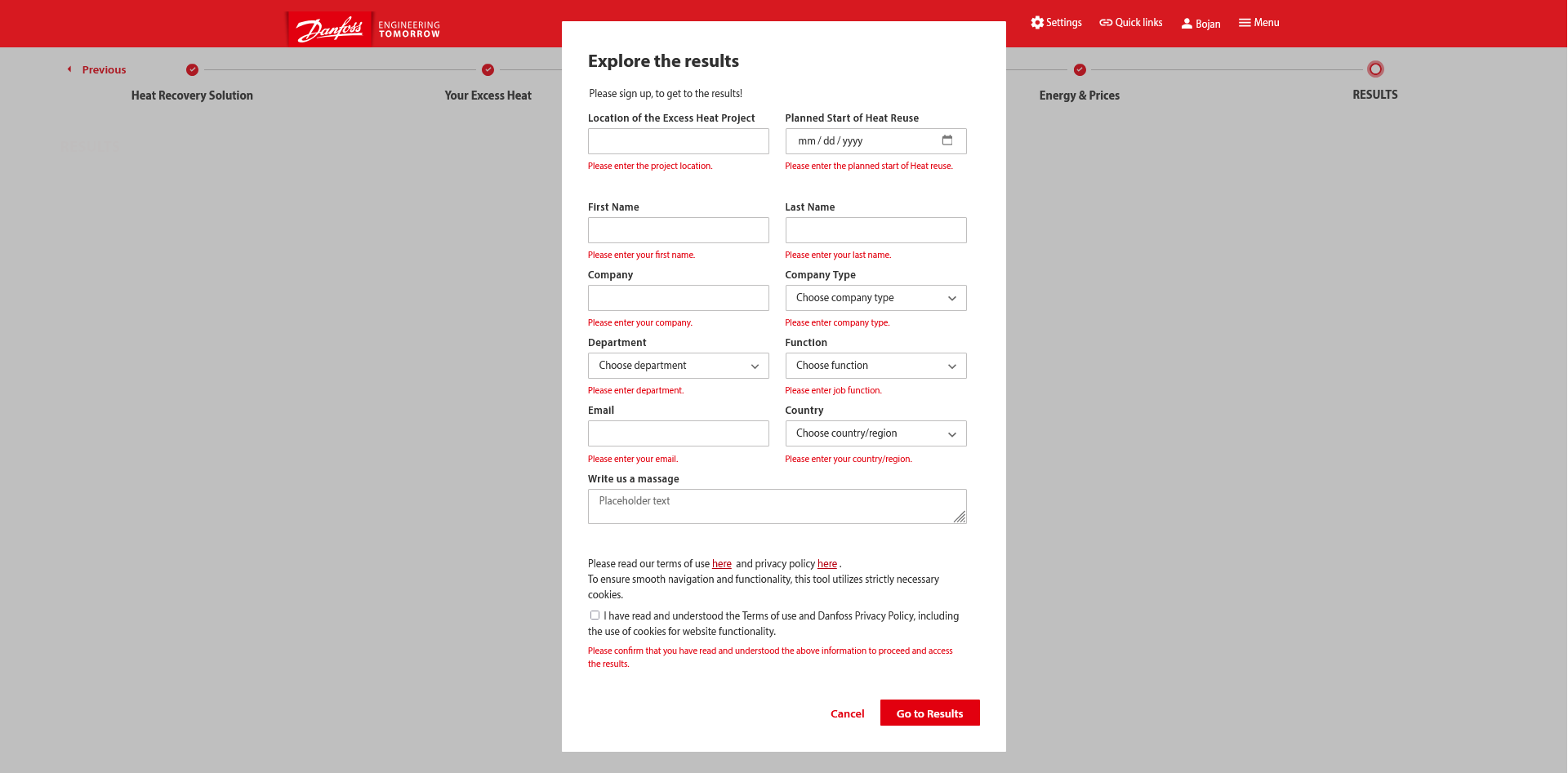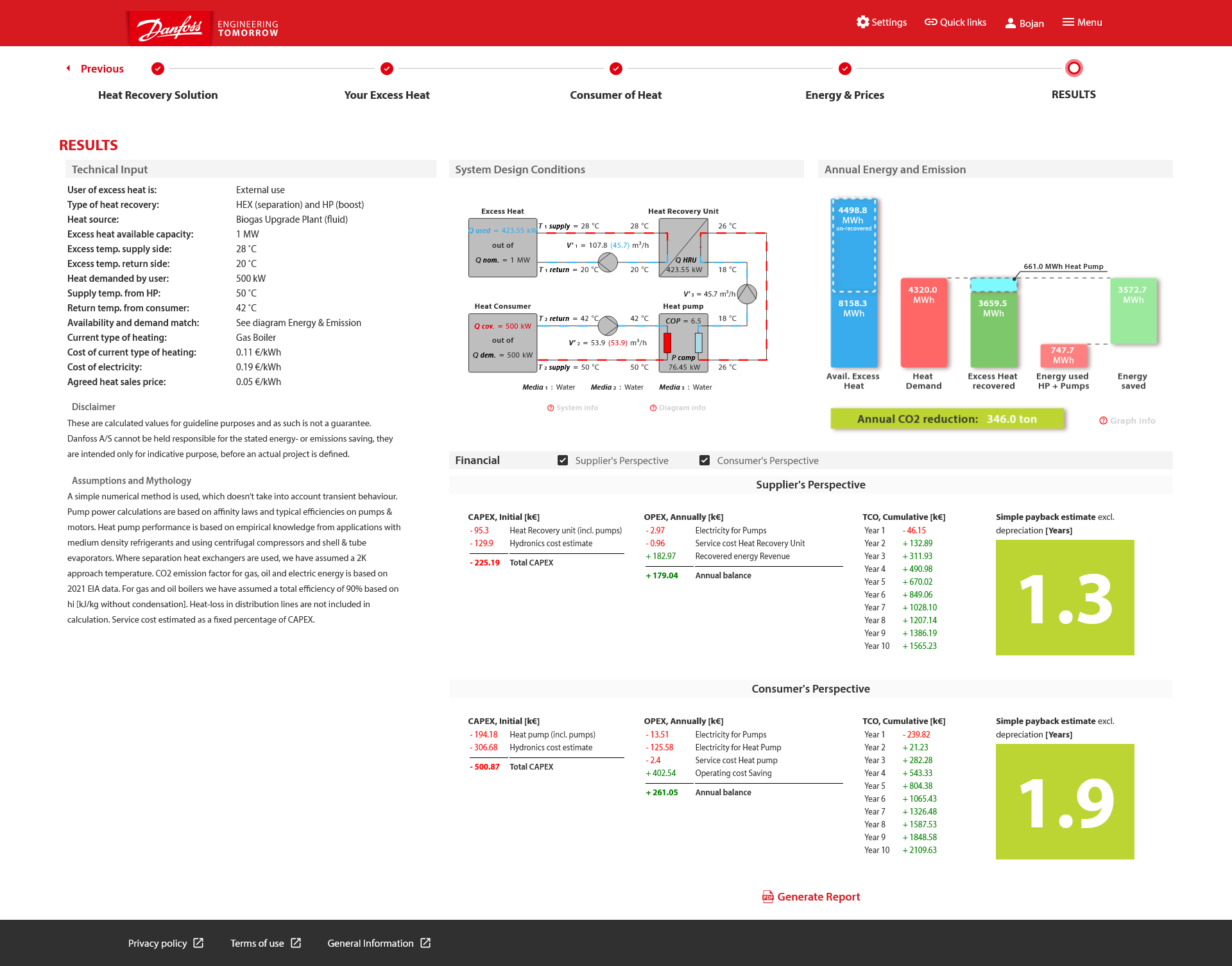RESULTS : Explore the opportunity
Technical Input:
On the left hand side, you can find basic information regarding your input data. Here you have
the possibility to double-check your inputs.
System type:
1. Excess Heat Side:
• The Excess Heat Box displays
the nominal and used capacity, which is the amount of heat energy that can be recovered and
utilized based on your excess heat information.
• The volume flow of the pump is also displayed, which is crucial for
calculating the energy costs of the pump.
2. Heat Recovery Unit:
• If your system includes a heat recovery unit, its capacity will be
displayed.
• The intermediate loop between the heat recovery unit and the heat
pump displays the supply and return temperatures, along with the pump and its volume flow.
3. Heat pump
• In the Heat Pump Box, you can
see the power consumption of the compressor which is necessary to boost the temperature.
• Based on this power, the electricity consumption of the heat pump
will be calculated.
4. Heat Consumer Side
• The Heat Consumer Boxshows the
capacity of the heat demand, along with the supply and return temperatures of your heating loop.
• The pump and its volume flow are also displayed here.
Energy and Emissions:
Here, you can explore your heat recovery opportunity in a graphical way.
Available Excess Heat represents the total amount of energy
per year that could potentially be
recovered. Excess Heat Recovered represents the amount of
energy that is utilized, depending on
your demand inputs. In case a Heat pump is needed for your heat recovery project the compressor
power will add additional heat which can be used which is stated in the light blue box.
In case there is more excess heat available compared to your demand there will be a part of your
available excess heat that in un-recovered. This additional un-recovered heat can be used for
example to supply it to a district heating network.
In case there is not enough heat available to fully cover your demand there will be an
“un-covered”
part which means your current heating system will still be needed but its load will
decrease.
In relation to the recovered heat, you can see the energy required for the heat pump and pumps.
The gap between the energy used by the heat pump and pumps and the recovered heat provides an
initial overview of how much energy you can save by recovering and reusing heat.
Below, you can see your potential annual CO2 reductions.
Please note that these savings assume
that the heat consumer is replacing a gas boiler by reusing excess heat.
Financial:
In the financial part, you can explore the financial aspects of the heat recovery opportunity. If
you have chosen to supply your excess heat to external there will be a suppliers and consumer
perspective. Each perspective has accordingly it´s individual CAPEX, OPEX and PAYBACK.
Investment (CAPEX): On the left, you get an initial
overview of your capital expenditure. Please
note that distribution and connection costs are not included in the CAPEX.
Operating Costs: Further to the right, you can find your
operating costs, segmented into:
• Electricity for Pumps
• Electricity Consumption of the Heat Pump
• Service Costs for the Heat Pump & Heat Recovery Unit
• Operating Cost Savings
• Recovery Energy Revenue
This information will lead you to your annual balance.
Additionally, on the right-hand side, you can explore the cumulative CAPEX and OPEX over the next
10 years. This will help you determine the financial benefit of your investment each year by
comparing the capital expenditure (CAPEX) with the annual savings. In the bottom right corner,
you find the simple payback estimation.
